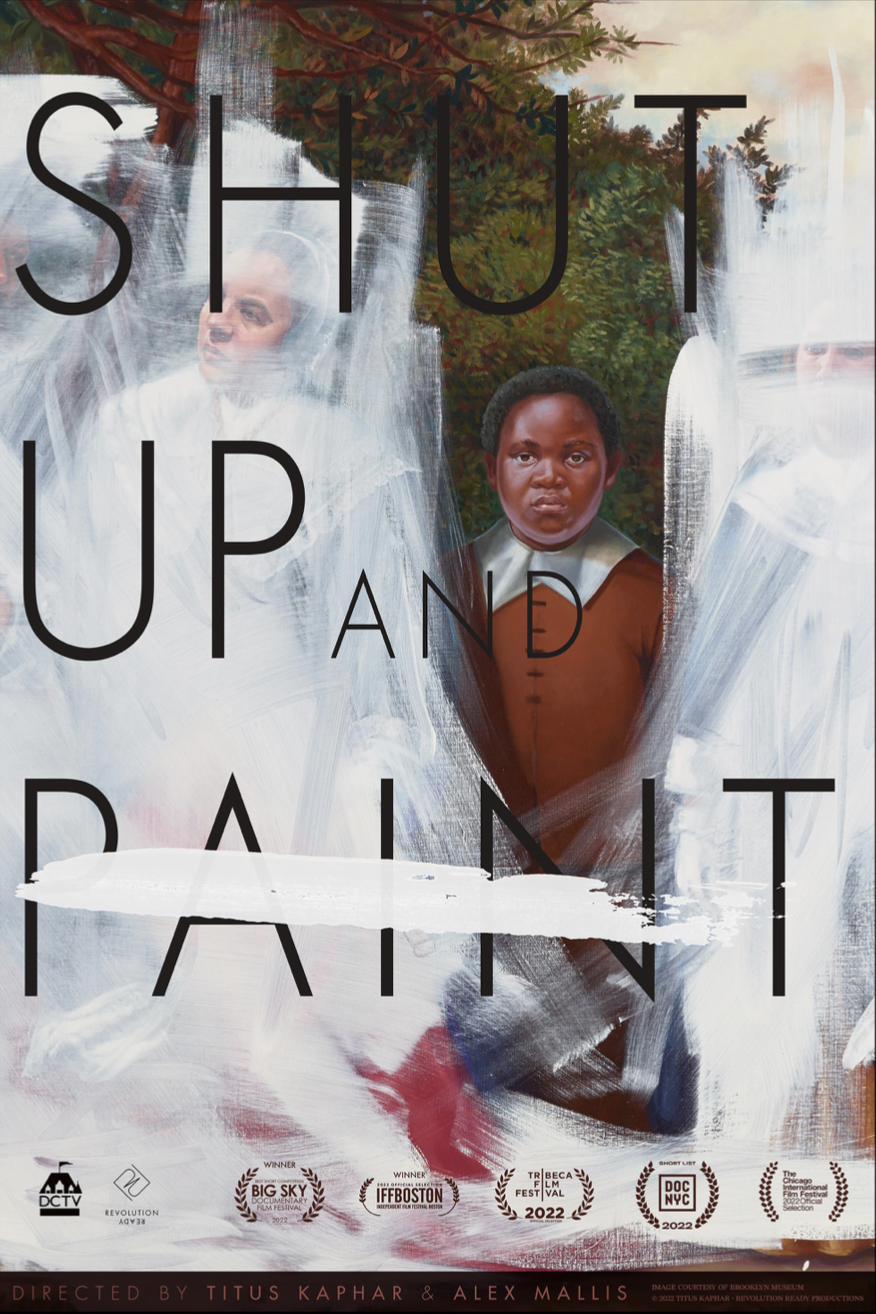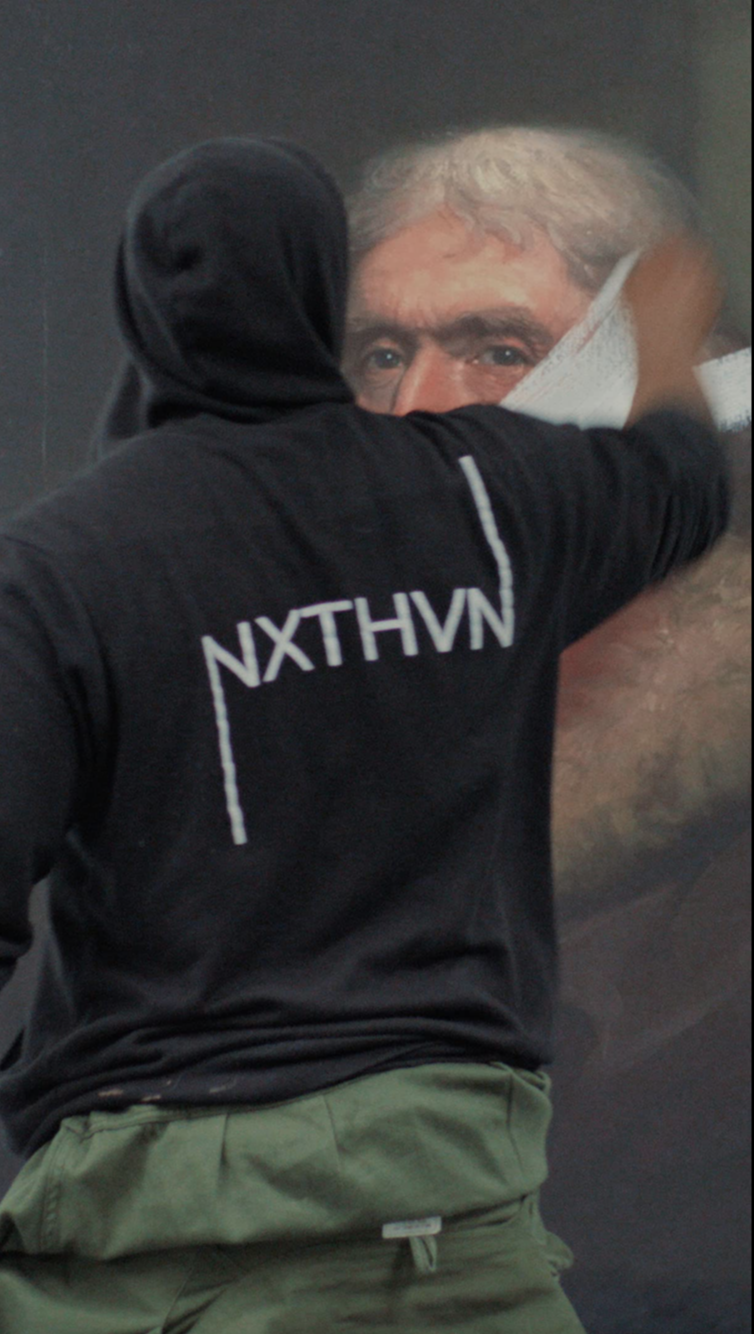Oscar Contender ‘Shut Up And Paint’ Reveals Dilemma Of Artist Titus Kaphar, Whose Work Is Valued, But His Message Not
- Oops!Something went wrong.Please try again later.
- Oops!Something went wrong.Please try again later.
- Oops!Something went wrong.Please try again later.

In 2018, the Fox News host Laura Ingraham—irritated over political comments made by LeBron James—told the NBA star to just “shut up and dribble.”
Artist Titus Kaphar can identify. He has been recognized as a major talent, with work that offers “new paths forward for art, away from its white, hegemonic traditions” (as artsy.net put it). Despite his prominence in the field he has been told, essentially, to “shut up and paint”—can the social commentary and just keep cranking out canvases.
More from Deadline
Shut Up and Paint, the Oscar-contending short documentary directed by Kaphar and Alex Mallis, explores his dilemma as an increasingly successful painter and sculptor whose art pleases while his voice discomfits. Early in the film, Kaphar gets a call from a gallerist in Europe giving him unsolicited feedback.

“We saw that there were no museums lining up to buy works,” the gallerist informs him. “Today, because you are so visible as an activist, if you could focus every interview given to your painting, to the work and not the message, I think that would help these curators.”
Kaphar and Mallis had already embarked on the documentary when that call came in, and their cameras captured the conversation.
“Very early in production he received that phone call from this European gallerist,” Mallis recalled at a recent Q&A, “who said point blank, ‘Shut up and paint,’ basically: ‘Stick to the script.’ That was very jarring for Titus, as a seasoned and in many ways world-renowned around artist, to hear something like that so blatant, so egregious. It sparked a lot of conversation for us to do with form and a lot to do with intention [for the film]. I’m thankful for that in the sense that it pushed us to really expand our approach.”
There are no sit-down interviews in the film. Instead, Kaphar is seen at work and in conversation with friends and associates. His art springs from and depicts the Black experience and critiques white supremacy, and yet he is faced with the realization that few people in the kind of community he came from can afford his art.
“These things we make exist in white spaces, in white people’s homes,” Kaphar says, “and they become separate from us, disconnected from us in a way that feels not just.”

He visits with Jason Stanley, a professor of philosophy at Yale, who tells Kaphar frankly, “Your art is non-fungible tokens for billionaires.”
What is an African American artist to do, who wants his work to be seen by People of Color and not hidden away in the palaces of the privileged? One solution Kaphar finds is to make films—the democratic art. He tells an actress he is casting in a scripted production, “The more successful I become, the less access folks have to my work. But as a film, it can go anywhere.”
Shut Up and Paint includes scenes from that narrative production, and subtly shows how it connects to some of Kaphar’s paintings which depict—at least in one possible reading of them—Black mothers whose babies have been cut from their arms. In the documentary, Kaphar works on the script with poet and legal scholar Dwayne Betts, a subject of some of Kaphar’s paintings. At moments in the film, Betts directly speaks into camera, reciting verse in a way that almost evokes a Greek chorus.
“The market will want to control the message,” Betts observes in one of those gnomic direct-to-camera moments.
Mallis described the process of incorporating Betts’s poetry into Shut Up and Paint.
“We showed him a rough cut of the film, with just holes and said, ‘What do you think this film is about?’” Mallis recalled. “We talked about what we felt the film was about and we said, ‘Write something in this sort of rough timeframe.’ And then he sent us voice notes and we just inserted it… to see if it kind of worked, and then felt like it was working, and then went on and shot it in the way you see in the film.”

Shut Up and Paint aired as part of the POV Shorts program on PBS in November. It won Best Short at the Independent Film Festival Boston and the Big Sky Documentary Film Festival, and was an official selection of the Tribeca Film Festival in June. It is nominated as Best Nonfiction Short at the upcoming Cinema Eye Honors.
Going back to LeBron James, the future hall of famer continues to speak out on political issues while continuing his legendary career on court. Titus Kaphar, meanwhile, continues to paint, sculpt and make films. And, no, he won’t be silenced either.
Best of Deadline
Sign up for Deadline's Newsletter. For the latest news, follow us on Facebook, Twitter, and Instagram.

